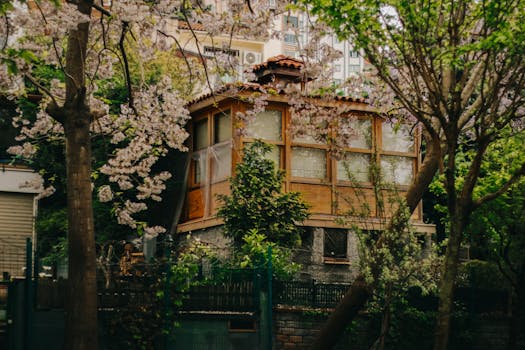
Urban Green Spaces: The Future of Outdoor Living in European Cities by 2025
Urban Green Spaces are becoming increasingly important in European cities, and for good reason. As the world becomes more urbanized, the need for green spaces has never been more pressing. Urban Green Spaces are not just aesthetically pleasing, but they also provide numerous benefits for both the environment and the people living in these cities. In this article, we will explore the importance of urban green spaces and how they will shape the future of outdoor living in European cities by 2025.
What are Urban Green Spaces?
Urban green spaces refer to any area of vegetation in an urban environment, including parks, gardens, green roofs, and even urban forests. These spaces can be publicly or privately owned and can range in size from small gardens to large urban parks. The importance of urban green spaces cannot be overstated, as they provide numerous benefits for both the environment and the people living in these cities.
Benefits of Urban Green Spaces
There are numerous benefits to urban green spaces, including:
- Improved air quality: Urban green spaces can help to purify the air by removing pollutants and particulate matter.
- Temperature regulation: Green spaces can help to regulate the temperature in urban areas, reducing the urban heat island effect.
- Noise reduction: Urban green spaces can act as a buffer against noise pollution, creating a more peaceful environment.
- Increased biodiversity: Green spaces can provide a habitat for wildlife, increasing biodiversity in urban areas.
- Improved mental health: Spending time in nature has been shown to have a positive impact on mental health, reducing stress and anxiety.
- Increased physical activity: Urban green spaces can provide opportunities for physical activity, such as walking, cycling, and sports.
The Future of Outdoor Living in European Cities
By 2025, European cities are expected to become even more urbanized, with more people living in cities than ever before. As a result, the need for urban green spaces will become even more pressing. Cities will need to incorporate green spaces into their urban planning, not just as an afterthought, but as a central component of their design. This will require a fundamental shift in the way cities are planned and designed, with a focus on sustainability, green infrastructure, and the well-being of citizens.
Examples of Urban Green Spaces in European Cities
There are many examples of urban green spaces in European cities, including:
- London’s Hyde Park: One of the largest urban parks in Europe, providing a peaceful oasis in the heart of the city.
- Paris’s Luxembourg Gardens: A beautiful and historic garden, providing a tranquil escape from the hustle and bustle of the city.
- Amsterdam’s Vondelpark: A large and popular urban park, providing a space for recreation, relaxation, and socialization.
Conclusion
In conclusion, urban green spaces are becoming increasingly important in European cities, and will play a crucial role in shaping the future of outdoor living by 2025. As cities become more urbanized, the need for green spaces will become even more pressing, and cities will need to incorporate them into their urban planning. By providing numerous benefits for both the environment and the people living in these cities, urban green spaces will become a central component of sustainable and livable cities.






